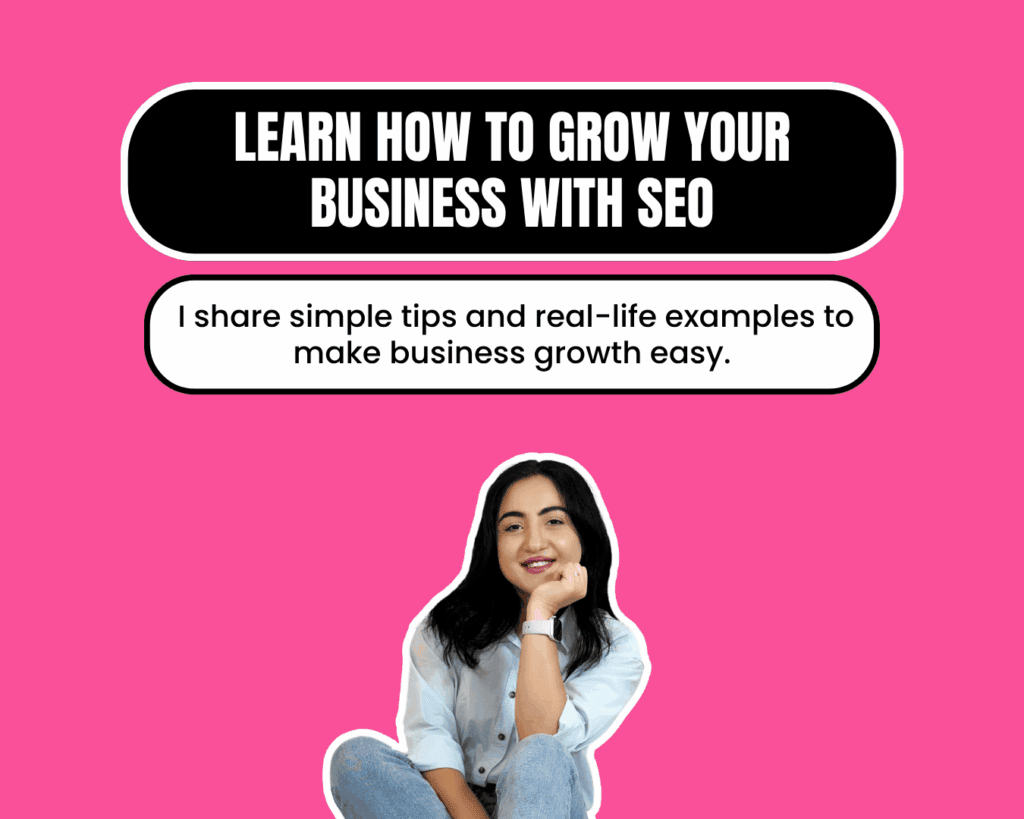Are you posting on social media, running ads, and sending emails but not seeing results? Don't worry - you're not doing anything wrong. The real problem is trying random marketing activities without a clear plan. What you need is a marketing funnel - a step-by-step system that turns strangers into customers. When you add SEO (search engine optimization) to your funnel, you'll attract people who are already looking for what you offer. I will show you how to create a simple marketing funnel that actually works.
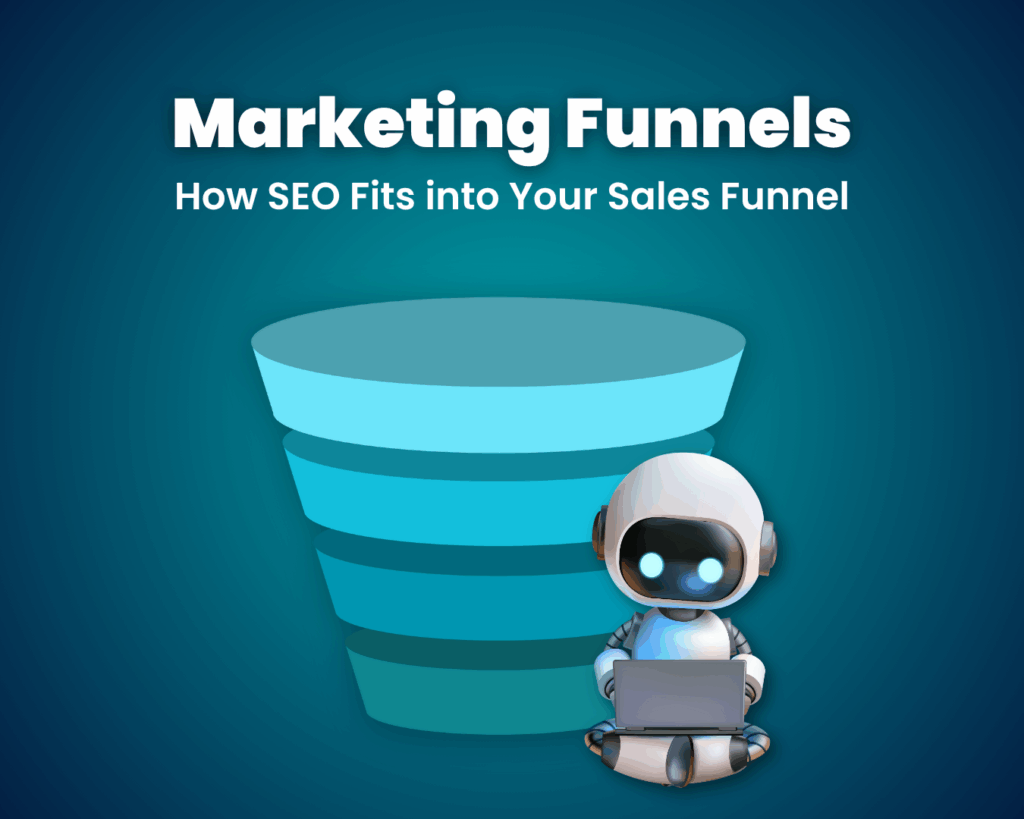
What role SEO plays in your Marketing Funnel
Think of SEO like a magnet that attracts the right people to your business. When someone searches online for help with a problem you can solve, SEO makes sure they find you. It's not just something you do once and forget - SEO helps you connect with customers at every stage: when they first discover you, when they're learning more, when they're ready to buy, and even after they become customers. We'll show you simple ways to use SEO at each of these stages without making things complicated.
Top of Marketing Funnel: Attracting Visitors with SEO
At the top of your marketing funnel, the goal is simple - get noticed by people who haven’t heard of you yet. Here’s how to use SEO for that:
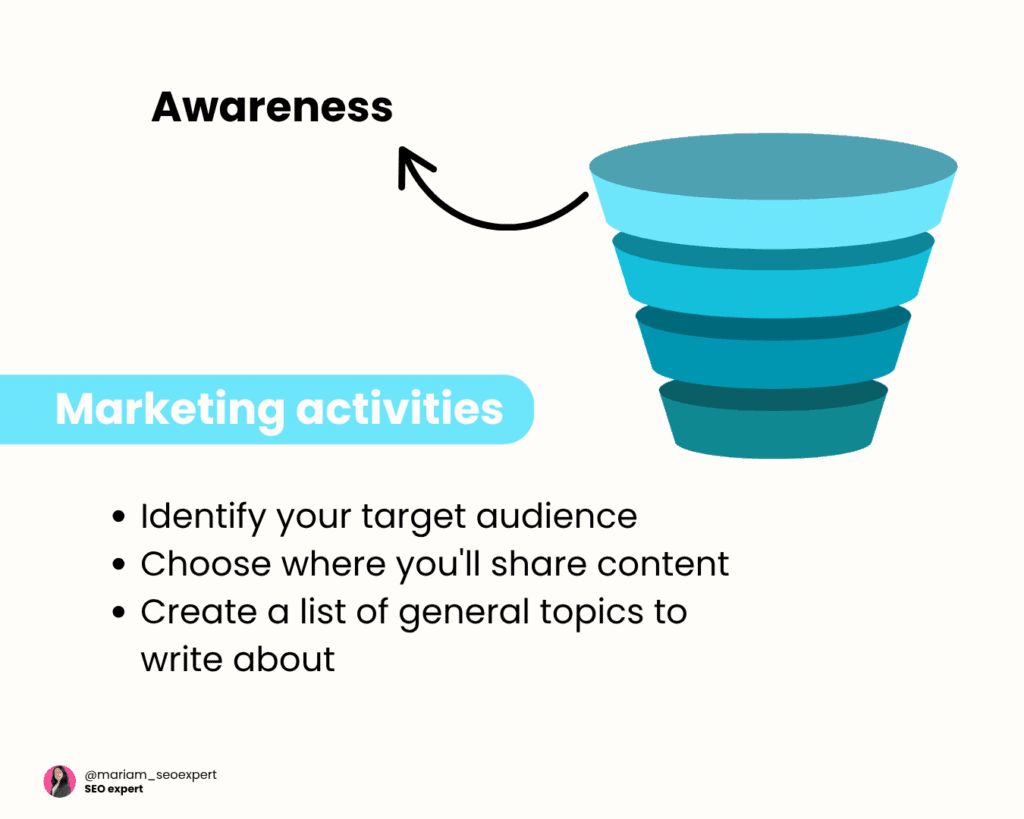
- Start by finding what people search for. Think about what questions your customers usually ask. Write down simple searches like "how to…," "what is…," and "why is… important." Listen to what your customers say, or imagine what they might ask about.
- Make content that helps people. Write simple blog posts, make short videos, or record quick audio tips. Write like you're talking to a friend - keep it natural and easy to understand. Break your content into small sections with clear titles.
- Make your pages easy to find. Give each page a clear title that tells people what it's about. Write a short description that explains how it helps readers. Use simple words in your website addresses. Make your headings clear so people know what each part covers.
- Connect your pages together. When you write something new, link to it from your older pages that talk about similar topics. For example, if you have a basic guide, link it to more detailed articles. This helps readers find more useful information.
- Get others to share your work. Work with other businesses or experts in your field. Share helpful tips or stories on their websites. When they mention you or link to your site, more people will find you.
- Keep your website working well. Make sure your pages load quickly and look good on phones. If your site is slow, people might leave before reading anything. A fast, smooth website helps both visitors and search rankings.
At this stage, you’re planting seeds. You may not see sales immediately, but you’re building awareness so the right audience finds you over time.
Middle of Funnel: Engaging Prospects Through SEO-Driven Content

Once people land on your site and find value, your next job is to deepen their interest. They’re aware of a problem and exploring options. Here’s how SEO ties in:
- Focus on more specific, deeper-intent phrases. As people learn, they type longer, more precise queries like “best approach for X in my situation” or “compare option A and option B.” Create content that compares choices, highlights pros and cons, or offers checklists (“5 things to check before choosing X”).
- Offer valuable downloads via optimized landing pages. Prepare a helpful checklist or template that solves a piece of their problem. Create a simple landing page. Use a clear headline that matches the main phrase. Explain the benefits in a few short lines. Include an easy form to collect email addresses.Make sure the page address and headings reflect the main phrase.
- Guide readers with internal links. From an article on “why common methods can fall short,” link to your checklist page. This gently nudges readers to exchange their email for a useful resource.
- Keep pages fast and mobile-friendly. Many prospects browse on phones during spare moments. If a landing page is slow or clunky, they’ll leave. Compress images, keep layouts lean, and test on different devices.
- Use structured cues for search results. If you have an FAQ or step-by-step guide, add simple structured hints so search results can show key points directly. This boosts click-through rates without naming specific markup methods.
- Nurture through follow-up and reminders. After someone downloads a resource, send follow-up messages with extra tips or stories of success. You can also show ads to remind them about your solution. Whenever you share content, keep it focused on solving their problem rather than a hard sell.
By aligning content precisely to what people search at this stage, you show you understand their needs and move them closer to trusting your solution.
Turning Interested People into Customers with SEO
By this point, people know about your business and are thinking about buying from you. They've probably seen your helpful content before. Good SEO helps make sure they can easily find your product or service pages and trust your business.
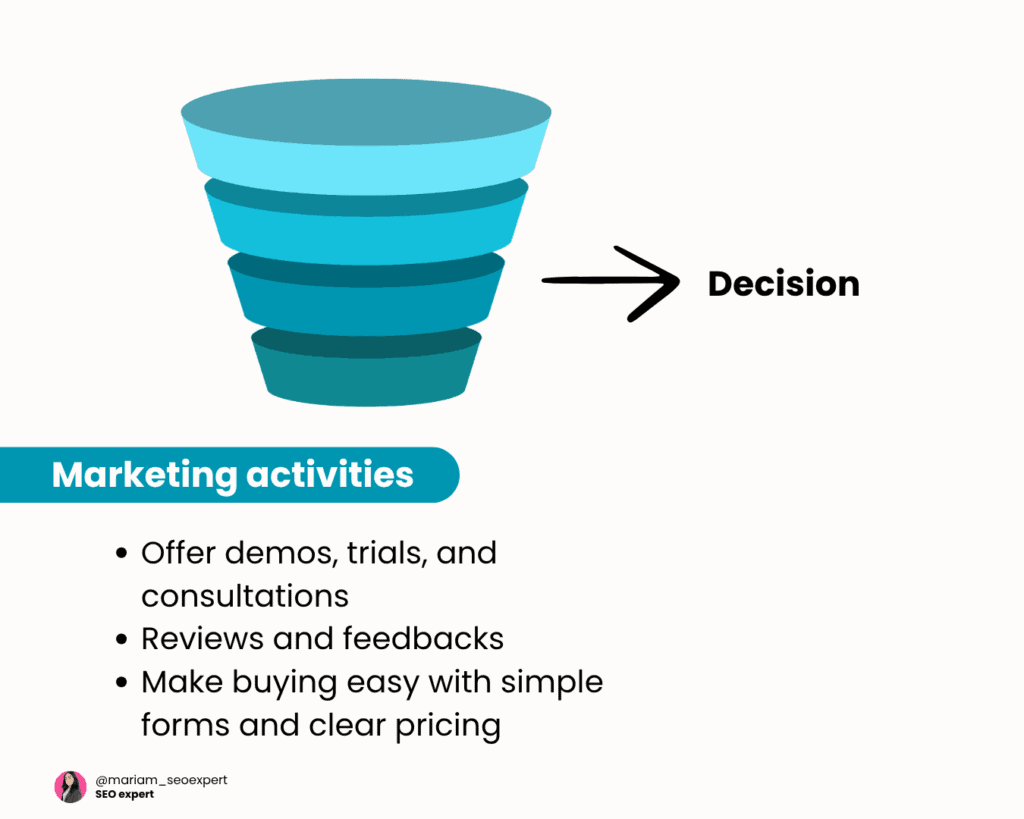
- Make your product pages easy to find. When people want to buy something, they search for specific phrases like "buy X" or "X near me." Use these common search phrases in your page titles and headers. Explain what you offer in simple, clear language.
Share real customer feedback. Incorporate customer testimonials and case studies prominently on your webpages. Prioritize reviews that detail quantifiable outcomes and successes. Engage with satisfied clients to solicit fresh testimonials, incorporating phrases such as "Client Perspectives" to present these insights. This strategy helps build trust with potential visitors, leading to more conversions.
- Make your website easy to use. It should load quickly and be secure. Make sure it's simple for visitors to take action, like booking a call or trying your service. Avoid using annoying pop-ups. When your site works well, both visitors and search engines will like it more.
- Write in a friendly, clear way. Answer common questions upfront, like "How much does it cost?" Make your headings clear and helpful, such as "How to Start" or "Why Choose Us." Keep your writing short and simple.
- Tell people where you work. If you serve specific areas, mention this naturally in your content (like "We serve the Boston area"). This helps local customers find you.
- Make it obvious what to do next. Use clear buttons like "Get Started" or "Contact Us" that stand out on the page. Pay attention to which buttons work best by watching what visitors click.
Remember: At this point, it's not just about getting people to visit your website - it's about helping them find exactly what they need so they'll want to work with you.
After the Sale: Keeping Customers Happy and Spreading the Word
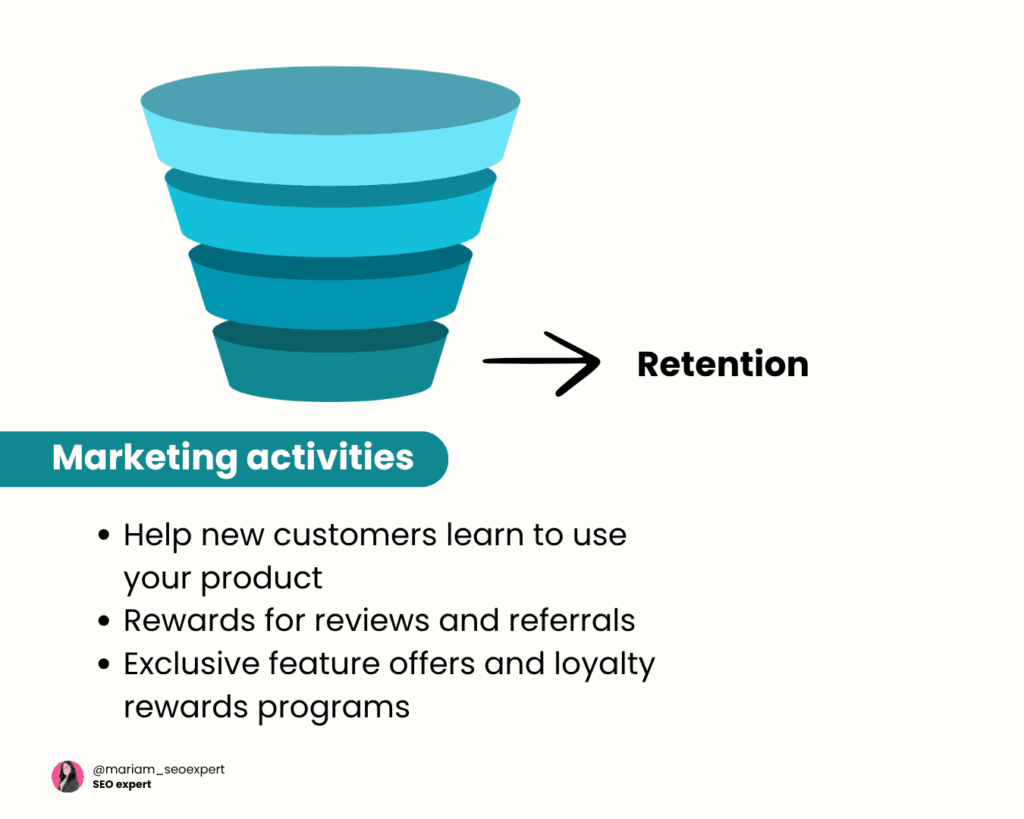
Your work doesn’t end at the sale. Happy customers can become repeat buyers and advocates. SEO supports retention and referrals in subtle but powerful ways:
- Build a helpful resource area. Offer articles or videos that answer common post-purchase questions: “How to get the most from your purchase,” “Tips for troubleshooting typical issues.” Make sure each piece addresses a natural question someone might type in when they need help.
- Encourage and showcase fresh feedback. Invite satisfied customers to share their thoughts. When new feedback appears, update your content so that search results reflect fresh perspectives. Real, detailed comments (“This feature saved me hours each week”) help both new visitors and search visibility.
- Refresh and repurpose popular content. Periodically review which articles or guides brought the most interest. Update them with new examples or insights, then republish at the same address so any existing search standing remains. You might turn a popular post into a short video or infographic and link back to it.
- Suggest related products or next steps. If someone bought an introductory item, offer deeper or complementary options via content: “5 advanced tips for using X,” “When it’s time to upgrade.” Write these in a way that naturally answers questions returning customers have.
- Share helpful email tips on your site. If you send a useful tip via email, consider turning it into a short on-site article. This builds your content library and attracts new visitors over time.
- Watch for branded search cues. Notice what people type when they include your name or product name plus words like “help,” “tips,” or “support.” Ensure content exists to address those searches so users find you first and build trust.
- Foster community-driven content. If you have a forum or group, let people ask and answer questions publicly. Some of those threads can be visible and searchable, bringing new visitors who see genuine peer advice and link back to your main resources.
SEO extends beyond initial acquisition. By optimizing support and ongoing content, you reinforce customer relationships and invite referrals.
How to Check and Improve Your Marketing Results
A funnel only works if you measure what matters and tweak based on data. SEO gives you clear signals:
- Watch how people find and use your website. Look at which search terms bring visitors to your site and how this changes each month. Pay attention to which pages get the most visitors and where people tend to leave.
- See how people interact with your pages. Check how much time visitors spend reading and if they look at other pages. If people leave quickly, try making your headlines better, breaking up the text into smaller chunks, or making your pages load faster.
- Count how many people download things or fill out forms. For each page where you want people to take action, track how many actually do it. Make your headlines and descriptions better to get more people to click through.
- Look at the bigger picture. Sometimes people read one of your articles, leave, and come back later to buy something. These helpful articles are valuable even if they don't lead to immediate sales.
- Try different versions of your pages. Test different headlines and "click here" buttons to see what works better. Just make sure to keep the main topic the same so search engines don't get confused.
- Listen to your customers. When you notice multiple customers asking the same questions, write new articles or FAQs to answer them.
- Be patient with growth. Success takes time for small businesses. Keep track of monthly increases in website visitors and how many of them become customers. Celebrate small improvements and make changes when things aren't working.
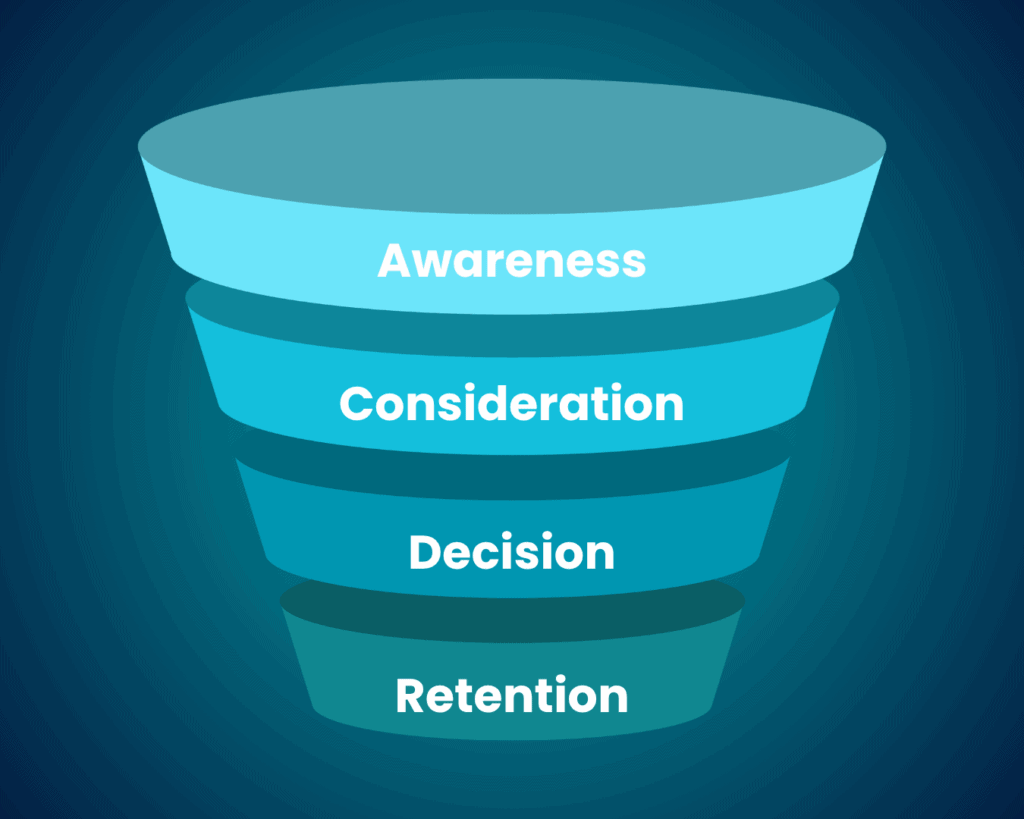
Keep improving your content over time: use what you learn from the data to choose new topics, update pages that aren't performing well, and try new things like videos or checklists.
Getting Started: Steps to Build Your SEO-Powered Marketing Funnel
- Set your goals. Draw out a simple plan showing how many website visitors you want, how many might become interested leads, and how many could become customers. Write down target numbers for each month.
- Find the right search words. Make two lists: one for basic search terms people use when first learning about your topic, and another for specific terms they use when ready to buy. Think about what your customers would actually type into Google.
- Choose what to write about. Start with basic how-to articles for newcomers. Then create detailed guides comparing different options. Make sure your product pages are clear and trustworthy. Finally, write helpful tips for existing customers.
- Make your website user-friendly. Check that people can easily find their way around your site. Make sure pages load quickly, especially on phones. This helps both visitors and Google find what they need.
- Write helpful content. Use simple, friendly language. Break text into small chunks with clear headings. Add useful images with good descriptions. Focus on quality over quantity.
- Share your content. Post your articles where your potential customers spend time online. Consider writing guest posts for other websites. Every mention of your site helps more people find you.
- Watch how your site performs. Use basic tracking tools to see where visitors come from, which pages they visit, and what they search for. Check these numbers regularly.
- Create free helpful resources. Turn your best articles into downloadable guides or checklists that people can get by sharing their email address. Keep these resources simple and useful.
- Improve your sales pages. Write better headlines, clearly show how you help customers, and make it obvious what people should do next (like "Buy Now" or "Contact Us").
- Keep content fresh. Every month or so, review your popular posts. Update old information, add new examples, and remove anything that's no longer useful.
- Take care of existing customers. Create a section with helpful tips for people who already bought from you. Ask them what they think and share their success stories on your site.
Learn from what works and what doesn't. If people aren't finding your content or taking action, try making your titles more appealing or adding helpful information. If people find your content but leave quickly, think about offering something different to keep them interested.
When you follow this plan, your random marketing activities will become more organized and focused on search engines. As time goes on, more people will find your business through online searches. This means you won't have to spend as much money on ads, and your business will grow naturally.
Meta Title and Description Suggestions
Here's how to write a good title and description that will make people want to click:
- Page Title (keep it around 50-60 letters):
- "Small Business Guide: Using SEO to Get More Customers"
- Brief Description (keep it around 150 letters):
- "Learn how to use SEO to bring more visitors to your website and turn them into customers, step by step."
Put your most important message at the start - you don't need to mention specific tools or websites.
Voice and Tone Tips
- Keep it friendly and simple. Write as if you're talking to a friend. Use words like "you" and "we" to make your writing more personal. Keep it short and clear.
- Make it sound natural. Include common questions your readers might have, like "How do I write better content?" or "What makes my website stand out?"
- Use helpful headings. Create clear titles that tell readers what's coming next, like "How to Get More Website Visitors."
- Skip the fancy words. When you need to use a technical term, explain it in simple words. For example, say what it means and why it matters.
- Make it easy to read. Break your writing into small chunks. Use bold text for important points. Make lists when showing steps.
- Start with a quick overview. Put a short list of main points at the top - this helps busy readers get the main ideas quickly.
Things That Can Go Wrong and How to Fix Them
- Don't make things too complicated at first. Start with the basics. Add more complex information only when your readers understand the simple stuff first.
- Focus on what your readers need. When people look for help with a problem, first give them a clear solution. Then you can tell them about your product or service.
- Make sure your website works well on phones. Look at your website on a mobile phone to check if it's easy to read and use.
- Write naturally. Don't stuff your writing with search terms. Instead, write in a way that sounds normal and is easy to read.
- Keep track of how you're doing. Set up simple ways to measure your website's success before you start publishing lots of content. This helps you know what's working.
- Keep your content up to date. Things change over time, and so do people's questions. Check and update your content regularly to keep it useful.
Conclusion: Turn Browsers into Buyers with an SEO Funnel
Think of a marketing funnel like a path that turns website visitors into customers. SEO is what helps people find your website and guides them along this path. Want to get started? Here's what to do:
First, pick topics your audience cares about. Then, make sure your website is easy to use. Write helpful articles that answer people's questions.
Watch what works best on your website and make it even better. Keep your content fresh by updating it often. Over time, more people will find your website through Google and other search engines. This means more customers and better sales for your business.
It's that simple - no more guessing! Just follow these basic steps and watch your small business grow.
